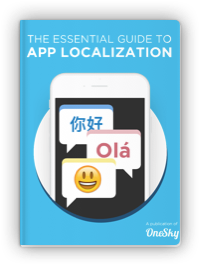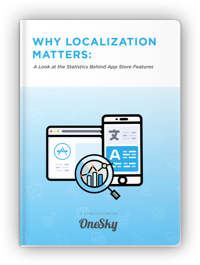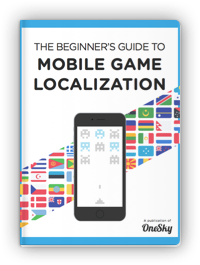n8n vs. Make: The Ultimate Showdown in Automation Solutions
In today’s fast-paced business environment, automation has become essential for enhancing productivity and streamlining operations.
Among the various automation tools available, n8n and Make stand out as leading platforms that cater to different user needs.
This comprehensive guide will dive into their features, pricing, integrations, and unique strengths, helping you determine which tool is the best fit for your organization.
- What are n8n & Make?
- Comparing n8n & Make: Fundamental Differences
- Pricing Models Overview
- n8n vs. Make: SWOT Analysis
- Optimal Use Cases
- n8n vs. Make: How to Make the Right Choice?
- Impactful Case Studies
- User Experiences with n8n & Make
- Unlocking the Power of Automation with OneSky
- Final Thoughts
What are n8n & Make?
n8n Overview
n8n is an open-source workflow automation platform that offers users exceptional control over their automated processes.
One of its most compelling features is flexibility; users can self-host workflows, which allows for deep customization while adhering to data privacy regulations.
n8n appeals particularly to tech-savvy individuals and developers, thanks to advanced features such as loops and conditional logic that enable the creation of intricate workflows connecting multiple APIs and applications.
With n8n, organizations can design tailored automation solutions that effectively meet their specific operational needs.
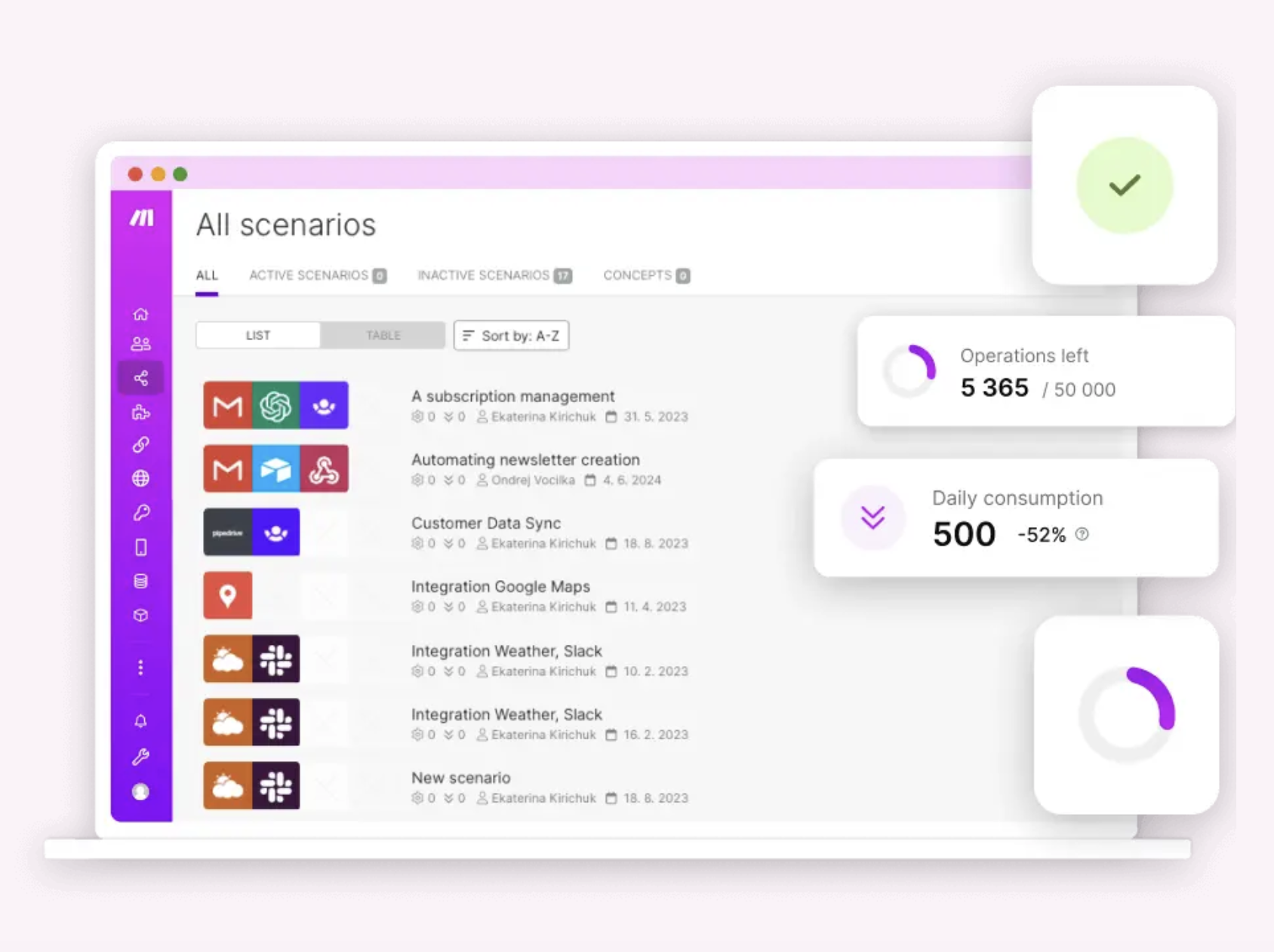
Make Overview
Make (formerly known as Integromat) is a visual automation platform that focuses on providing a user-friendly experience.
Designed for no-code use, Make allows users to create and manage workflows through a drag-and-drop interface.
This platform simplifies the automation process across multiple business applications, making it an excellent choice for those who need to streamline operations quickly without extensive technical knowledge.
Make enhances productivity by connecting various applications and allowing for complex workflows through its visual builder.
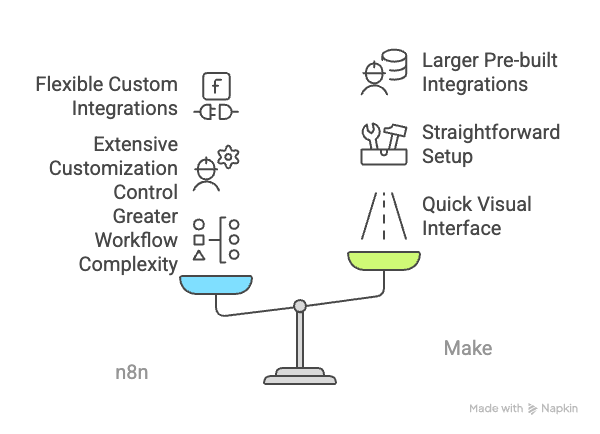
Comparing n8n & Make: Fundamental Differences
To effectively evaluate n8n and Make, focus on several critical criteria: workflow design, customization options, integration capabilities, and user experience.
1. Workflow Automation Style
| Feature | n8n | Make |
| Workflow Design | Flexible flowchart-style automation | Visual drag-and-drop scenario builder |
| Complexity | Supports intricate workflows with branching | Designed for multi-step workflows |
Our Insights
n8n provides greater complexity in workflow automation, making it ideal for advanced processes that require conditional paths.
Make’s visual interface allows users to create workflows quickly but may limit flexibility in dealing with intricate automation scenarios.
2. Customization and Flexibility
| Feature | n8n | Make |
| Customization | High, with JavaScript and API support | Moderate, focusing on pre-built modules |
| Scripting Capabilities | Supports advanced scripting for deeper integrations | Limited scripting capabilities |
Our Insights
For users who need extensive control and customization, n8n is the clear winner.Its capabilities appeal to businesses with complex automation requirements.
In contrast, Make provides a more straightforward setup, catering to users who prefer to rely on ready-made solutions rather than custom development.
3. Integration Capabilities
| Feature | n8n | Make |
| Number of Integrations | Over 400 integrations | 2,000+ integrations with custom API options |
| Custom API Connections | Highly flexible, allows for custom APIs | Basic API support but less flexibility |
Our Insights
n8n has fewer pre-built integrations, but its flexibility allows businesses to easily connect to custom or niche applications.Make, while offering a larger number of integrations, remains most effective for users who rely on popular software solutions.
4. User Experience and Learning Curve
| Feature | n8n | Make |
| Ease of Use | Requires technical knowledge | Intuitive, beginner-friendly |
| Learning Curve | Steeper; more technical features | Gentle; quick to get started |
Our Insights
Make’s user-friendly interface is designed to quickly onboard users with minimal technical experience.
n8n, while powerful, may be overwhelming for beginners who need more time to familiarise themselves with its complex capabilities.
Pricing Models Overview
Understanding the pricing structures of n8n and Make is essential when making an informed decision regarding your automation needs.
Here’s a comparison of their pricing plans:
| Feature | n8n | Make |
| Free Plan | Yes, fully self-hosted | Yes, includes 1,000 operations per month |
| Paid Plan | Starts at €20 per month for cloud version | Starts at approximately $9/month for 10,000 operations |
| Task/Operation Limits | Charges per completed workflow | Charges based on operational usage |

n8n’s Cost-Effective Flexibility
- Self-Hosted Version: Free to use with unlimited workflows, ideal for users with technical skills who want complete control over their automation and data privacy.
- Cloud-Hosted Option: Available starting at €20 per month for 2,500 workflow executions. This plan includes monitoring and support, making it a practical choice for businesses that prefer a managed cloud solution.
- Pricing Advantage: n8n is charged based on the number of completed workflows rather than individual tasks. This means that for complex workflows with multiple steps, you only pay for the execution of the full workflow, making it cost-effective for larger operations.
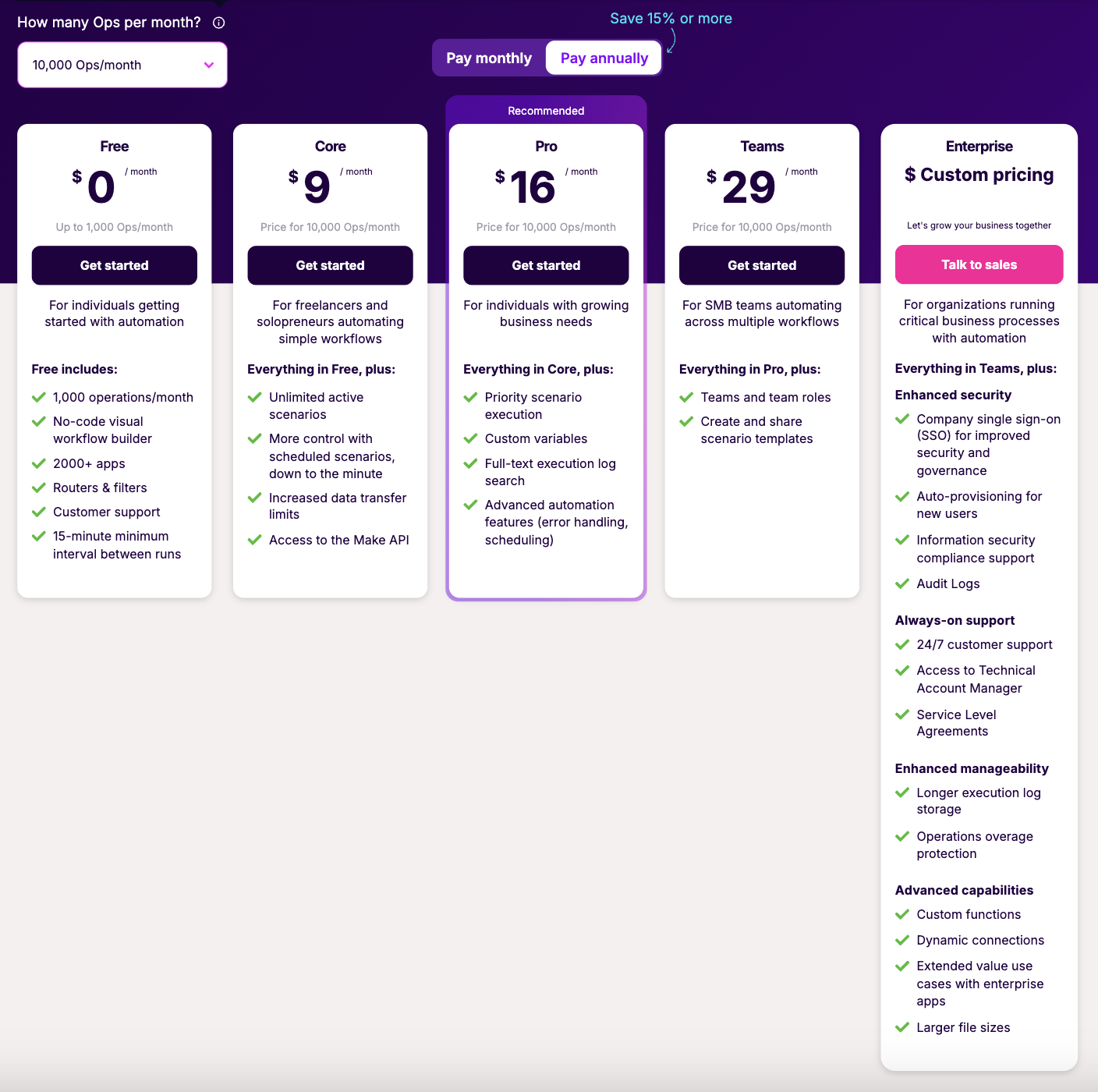
Make’s Cost Structure
- Free Plan: Make’s free tier allows for up to 1,000 operations per month, making it suitable for small-scale users or those new to automation.
- Starter Plan: The entry-level paid plan starts at around $9 per month for 10,000 operations, which provides users with a substantial capacity for automating tasks.
- Operational Pricing: Make counts each step in a workflow as an operation. This granular pricing model can lead to unexpected costs if workflows are designed with multiple steps, highlighting the need for careful planning and management of operations.
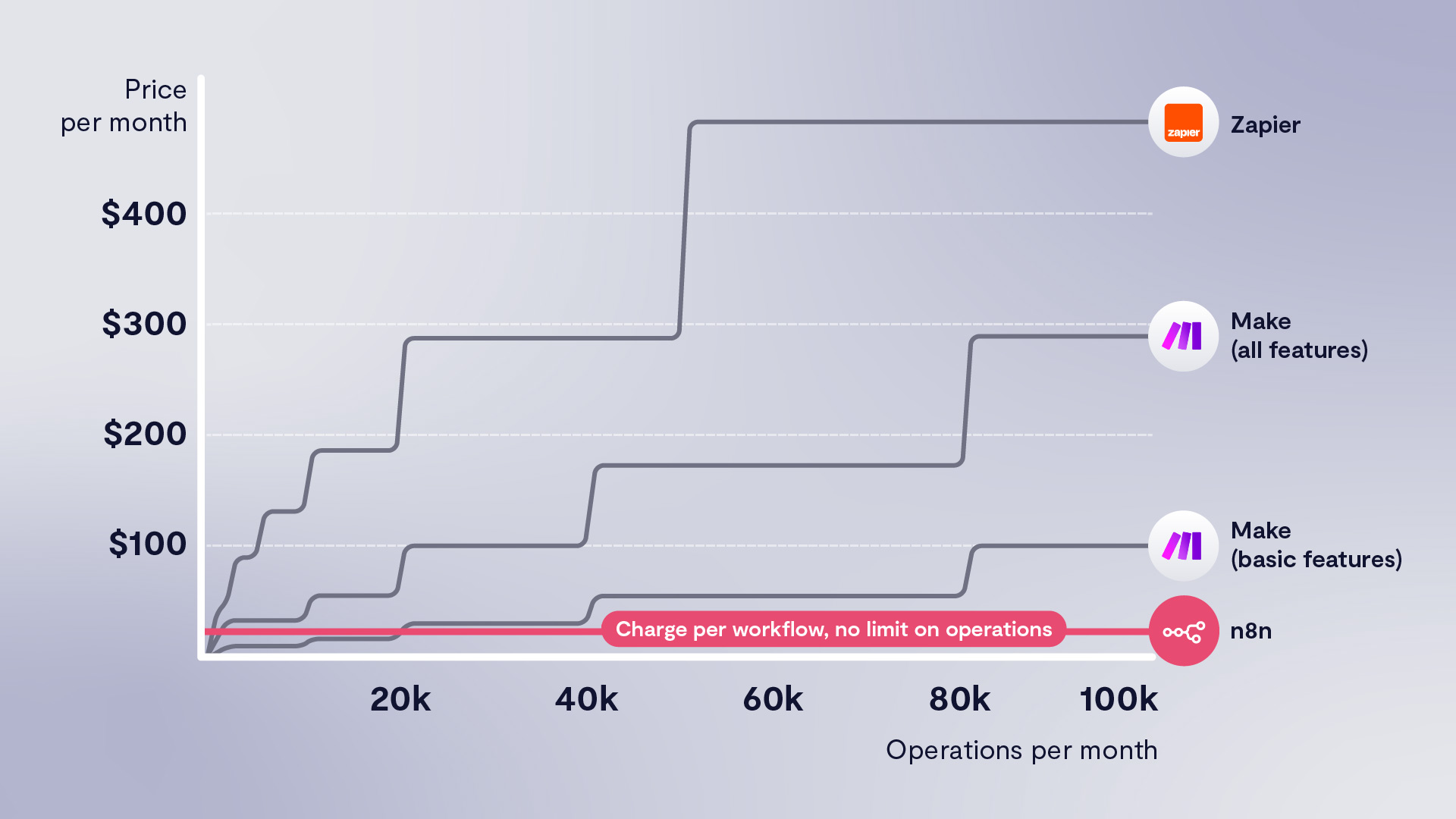
Cost Comparison
When considering costs, it’s essential to examine how each platform’s pricing model affects your budget based on your usage pattern:
| Comparison Factor | n8n | Make |
| Free Plan Capabilities | Unlimited workflows | 1,000 operations/month |
| Basic Paid Plan | €20/month for 2,500 executions | ~$9/month for 10,000 operations |
| Pricing Structure | Charges per workflow execution | Charges per individual operation |
| Cost Effectiveness for High Volume | More economical for complex workflows | Can become expensive with multi-step workflows |
For businesses expecting high-volume automation, n8n can present a more attractive option, especially if they have the resources to self-host.
n8n vs. Make: SWOT Analysis
Recognizing the strengths and weaknesses of n8n and Make is crucial for making an informed decision.
Here’s an overview that highlights what each platform brings to the table.
Strengths of n8n:
1. Freedom Through Self-Hosting
n8n’s self-hosting option allows businesses to maintain complete control over their data security and compliance.
This is especially appealing for industries with strict regulations.
2. Powerful Customization
Advanced scripting capabilities in JavaScript and Python enable developers to create intricate workflows.
This empowers organizations to tailor their automation processes extensively based on their specific needs.
3. AI Integration
Supports developing AI-driven workflows, ideal for companies that wish to incorporate artificial intelligence into their automation strategies.
Weaknesses of n8n:
1. Steeper Learning Curve
Non-technical users may find n8n challenging due to its complexity.
The advanced features require a greater understanding of programming concepts.
2. Fewer Pre-Built Integrations
n8n’s library of over 400 integrations, while functional, is relatively small compared to competitors, which may require users to create custom nodes for less common applications.
3. Maintenance Responsibilities
Self-hosting involves managing your infrastructure, which can strain resources for organizations without dedicated IT support.
Strengths of Make:
1. Intuitive User Experience
Make is known for its easy-to-navigate visual interface, making it straightforward for users of all skill levels to set up automations without extensive training.
2. Comprehensive Integration Library
With over 2,000 integrations, Make supports a wide variety of popular applications, facilitating seamless automation of everyday tasks.
3. Visual Workflow Builder
The visual, drag-and-drop workflow design allows users to easily create and manage complex automations, enhancing clarity and visibility throughout the process.
Weaknesses of Make:
1. Limited Flexibility
While Make is excellent for creating straightforward automations, it may fall short when users need intricate customization options.
This limitation can be a drawback for businesses with specific or complex requirements.
2. Learning Curve for Complex Features
Although primarily user-friendly, Make can become less intuitive for more advanced functionalities, requiring time for users to become proficient.
3. Lower Number of Apps Compared to Zapier
Not having as many integrations as competitors like Zapier could limit options for users who rely on specific software for their operations.
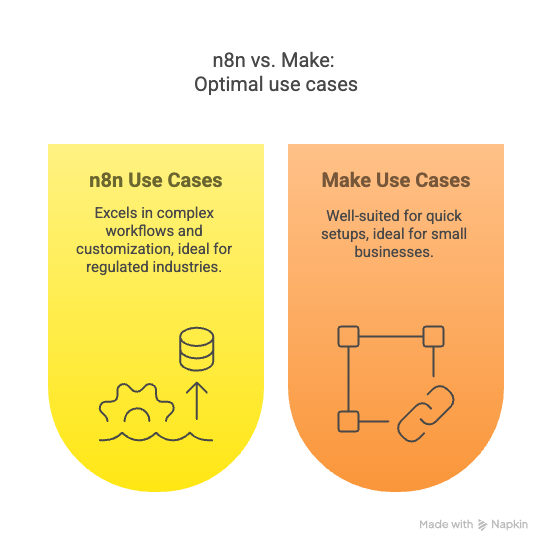
Optimal Use Cases
When to Use n8n
n8n excels in scenarios that demand complex workflows and deep customization:
- Industries: Ideal for sectors with strict data regulations, like finance, healthcare, and technology.
- Specialized Workflows:
- Custom Data Pipelines: Perfect for organizations needing to efficiently manage and manipulate large volumes of data.
- Niche Application Integration: For businesses using proprietary systems requiring custom automation solutions.
- GDPR Compliance: Self-hosting capabilities ensure that data processes meet stringent privacy regulations.
When to Use Make
Make is well-suited for quick automation setups and users who prioritize ease of use:
- Industries: Ideal for small businesses, marketing teams, and customer service departments that need to automate standard tasks swiftly.
- Use Cases:
- Lead Management: Automate the process of capturing and managing leads from multiple sources, significantly reducing manual data entry.
- E-Commerce Operations: Streamline order processing by linking platforms like Shopify with inventory management systems for efficient workflow.
- Social Media Management: Simplify the scheduling and posting of content across social media platforms, enabling businesses to maintain an active online presence effortlessly.
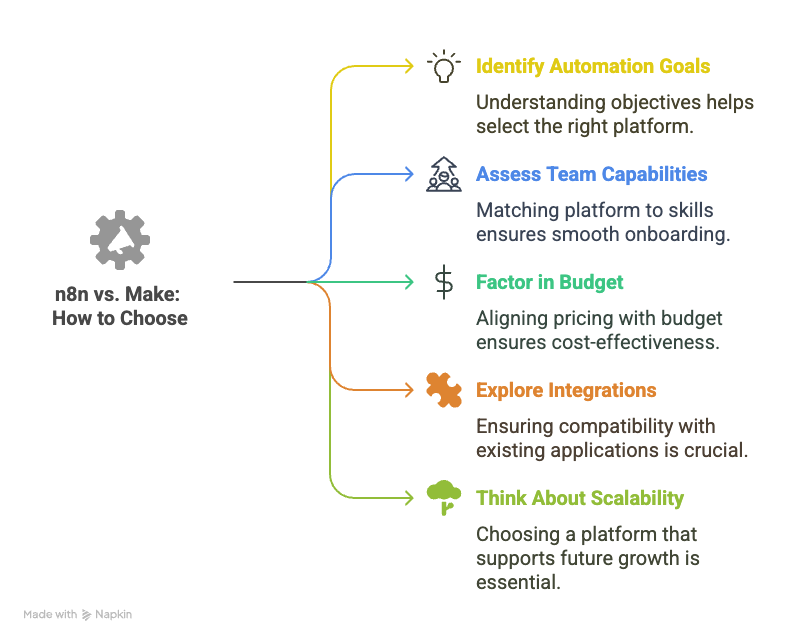
n8n vs. Make: How to Make the Right Choice?
Choosing between n8n and Make ultimately comes down to your specific workflow automation needs, budget, technical skills, and long-term goals.
Here are some considerations to help guide your decision:
1. Identify Your Automation Goals
Determine the primary objectives you want to achieve with automation.
Are you focused on improving operational efficiency, enhancing data accuracy, or simplifying complex workflows?
Understanding your goals will help you pinpoint which platform is best suited for your needs.
2. Assess Team Capabilities
Take stock of your team’s technical skills.
Choose a platform that matches your team’s expertise to ensure a smoother onboarding process.
If your team is less technical, Make’s intuitive interface may offer a more comfortable entry point, while n8n may be more appealing for teams with strong coding backgrounds.
3. Factor in Your Budget
Consider the pricing models of each platform and how they align with your budget.
If you anticipate high-volume usage, n8n’s cost-effectiveness in self-hosted options may be advantageous.
Conversely, for teams with moderate needs, Make’s pricing could offer a competitive edge with its straightforward costs.
4. Explore Required Integrations
Check the integrations each platform provides and ensure they align with the applications you currently use.
While Zapier boasts a larger library, Make’s flexibility in API connections may be crucial if you rely on niche or proprietary software.
5. Think About Scalability
Reflect on your future growth plans.
If you expect to scale your automation efforts significantly, choose a platform that can accommodate increased complexity and volume without leading to mounting costs.
Impactful Case Studies
Consider how n8n and Make can be utilized in practical scenarios.
Here are examples of organizations that have successfully implemented these tools:
n8n in Action
1. Finance Sector
A fintech startup used n8n to automate its complex data processing workflows.
By creating custom data pipelines that integrated multiple data sources, they streamlined operations while ensuring compliance with regulatory standards.
2. Marketing Campaigns
A digital marketing agency turned to n8n to automate lead scoring and data enrichment processes, allowing them to focus more on strategy and less on manual data handling, ultimately improving ROI on campaigns.
Make in Action
1. E-Commerce Success
An online retailer harnessed Make to synchronize order processing between its e-commerce platform and inventory system.
This integration reduced processing time from over fifteen minutes to just one minute, greatly enhancing operational efficiency.
2. Customer Support Efficiency
A service-based company utilized Make to automate its customer support ticketing system.
By linking emails to a customer relationship management (CRM) tool, they significantly improved response times and increased customer satisfaction.
User Experiences with n8n & Make
Hearing from users who have transitioned between n8n and Make can provide valuable insights into each tool’s practical benefits:
Zapier to Make Transition:
Many users report that they started with Zapier due to its simple initial setup but quickly sought out Make once their automation needs became more complex.
They appreciate the visual interface and the ability to create more detailed workflows with conditions and branching logic.
n8n’s Flexibility:
Users transitioning to n8n from traditional automation tools often highlight the platform’s ability to accommodate sophisticated workflows.
Those with coding experience find that n8n’s capabilities for custom scripting and API integrations enable them to automate processes that were previously infeasible.
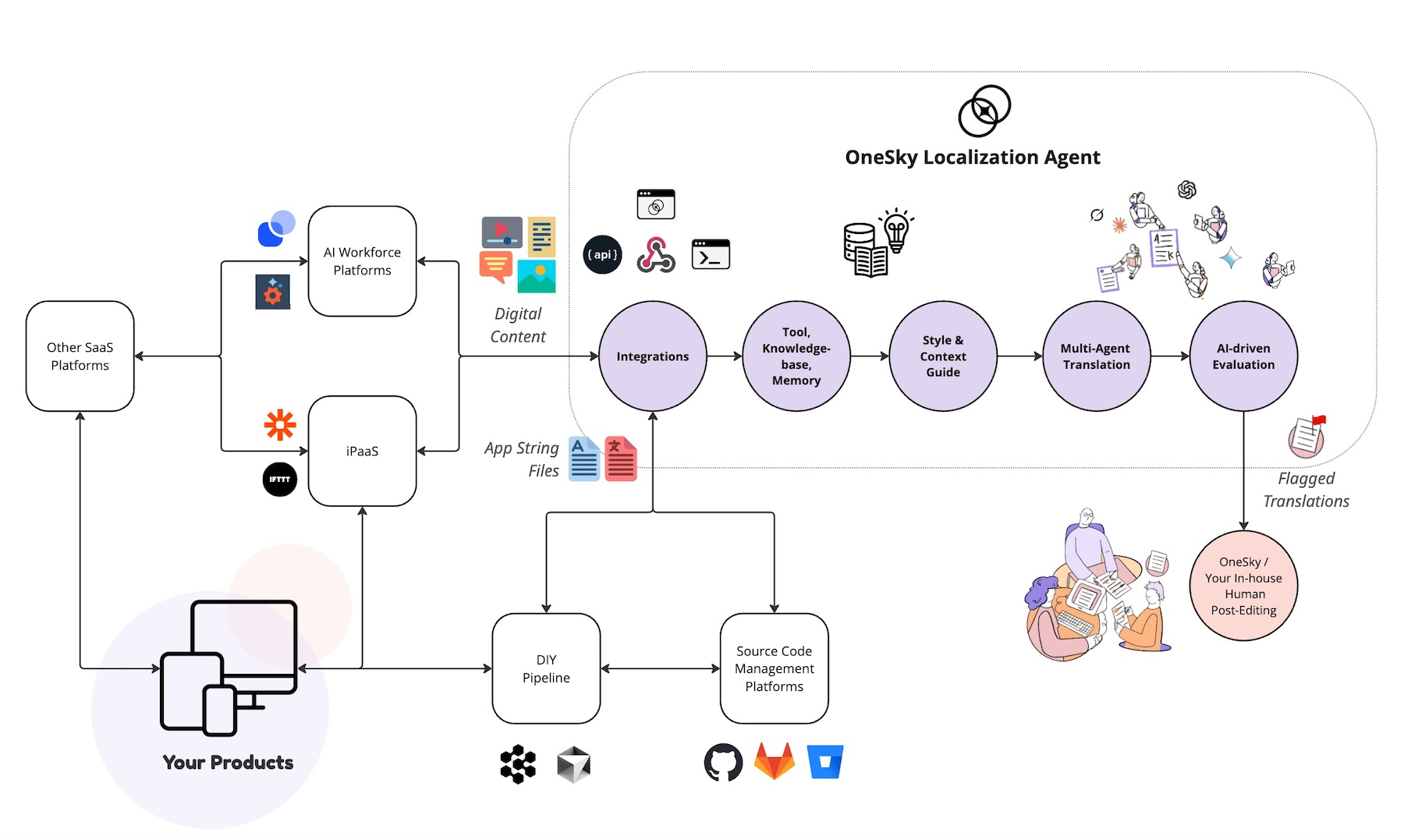
Unlocking the Power of Automation with OneSky
As automation tools like n8n and Make continue to evolve and cater to the increasing demands for efficiency and customization, integrating specialized solutions can greatly enhance your overall strategy.
One such solution is OneSky Localization Agent (OLA), which can be a game changer for businesses aiming to expand their global reach while ensuring quality and consistency in localized content.
1. Seamless Integration into Existing Workflows
OneSky’s OLA integrates effortlessly with platforms like n8n and Make, optimizing localization processes across various markets.
Whether you’re automating workflows that involve translating marketing materials or tailoring product descriptions for cultural relevance, OLA provides a robust framework that enhances operational efficiency.
2. Advanced AI Capabilities
With OLA, businesses can leverage advanced AI to intelligently automate localization tasks.
This includes contextual translation and the ability to adapt content for different cultural nuances.
Using AI-driven processes not only improves efficiency but also guarantees that the final output is both accurate and relevant, boosting user engagement and satisfaction across diverse audiences.
3. User-Friendly Experience
Designed with accessibility in mind, OneSky ensures that teams can utilize OLA without needing extensive technical expertise.
This fosters a more efficient setup and minimizes the learning curve, allowing businesses to focus on critical tasks rather than navigating complex configurations.
4. Consistent Quality Assurance
Maintaining brand integrity across multiple languages is crucial.
OLA’s advanced quality control mechanisms ensure high-quality translations, which helps strengthen brand loyalty and trust—key elements for success in international markets.
Real-World Impact
Imagine a multinational e-commerce company preparing to launch marketing campaigns in different languages.
By integrating OneSky’s OLA with their existing automation setup—potentially utilizing n8n for workflow management—they can automate the localization process seamlessly.
This integration not only facilitates rapid translation of product descriptions but also allows the marketing content to be adapted to local cultural sentiments.
The result?
A significant reduction in time-to-market and an increase in customer engagement across various regions.
By incorporating OneSky Localization Agent into your automation strategy, you can enhance your workflows and ensure your business communications resonate with a global audience.
As automation continues to transform business operations, consider how tools like OLA can help you meet—and exceed—your localization and operational goals.
With streamlined processes and high standards of quality, OneSky positions your organization for successful growth in an increasingly interconnected marketplace.
Read also:
AI Localization: Mastering Global Reach with Best Practices
Understanding Agentic Workflow: Revolutionizing AI Decision Making
Final Thoughts
Choosing between n8n and Make hinges on your organization’s specific needs, technical capabilities, and long-term automation goals.
n8n shines for businesses seeking extensive customization and control over their workflows, particularly in data-sensitive sectors.
Meanwhile, Make excels at offering quick, user-friendly automation solutions, making it ideal for less technical users and teams that require immediate results.
By assessing your objectives, team skills, and budget, you can confidently determine the best platform for your automation journey.
Integrating OneSky Localization Agent (OLA) can further enhance your strategy by streamlining localization processes for global outreach.
Embrace the future of automation—explore how n8n, Make, and OneSky can work together to help your organization thrive!
Start your exploration today, for free!
FAQ: Common Questions About n8n and Make
Q1. What are the primary differences between n8n and Make?
n8n:
Offers an open-source platform with extensive flexibility and customization options, making it ideal for technical users who need an in-depth solution.
Make:
Provides a no-code interface that allows users to quickly create workflows through a visual, drag-and-drop system.
It’s designed for those who prioritize ease of use and fast setup.
Q2. Which platform is more beginner-friendly?
n8n:
Although it offers powerful features, n8n has a steeper learning curve.
Non-technical users may find it challenging to fully navigate its capabilities without some prior experience in automation or coding.
Make:
With its intuitive design, Make is particularly friendly for beginners.
Users can start building automations without any programming knowledge and leverage the extensive library of templates for ease of setup.
Q3. How do the pricing models compare?
n8n:
Utilizes an operation-based pricing structure, where costs are based on the number of workflow executions.
This can be cost-effective for businesses that manage complex workflows.
The self-hosted version is free to use, allowing companies to avoid ongoing fees entirely.
Make:
Operates on a tiered pricing model based on the number of operations.
Users start with a free plan that offers limited operations, but costs increase as they scale up their automation needs.
Q4. Can both platforms connect to my existing applications?
n8n:
Offers around 400 integrations but excels in its ability to create custom API calls.
This is especially useful for businesses dealing with proprietary software or specialized integration needs.
Make:
While it supports around 2,000 pre-built integrations, it also allows for custom API connections, making it a good choice for businesses that need to link unique or niche applications.
Q5. How do n8n and Make handle sensitive data?
n8n:
When used in self-hosted mode, it offers superior control over data privacy since the data remains on your infrastructure, making it ideal for compliance needs.
Make:
Mainly cloud-based, which may complicate data privacy compliance.
Organizations should carefully consider how their data flows are managed to ensure they meet regulatory expectations.
Q6. Can I migrate workflows from one platform to another easily?
Migration between n8n and Make can be challenging and typically involves manually rebuilding workflows:
- From Make to n8n: Users may face architectural differences that require significant adjustments.
- General Migration Strategy: It’s crucial to fully test new workflows on your chosen platform before discontinuing the original to ensure everything functions as intended.
Q7. What support options are available for each platform?
n8n:
Primarily relies on community-driven support, which includes forums and extensive documentation available online.
Users of n8n.cloud also gain access to managed support services.
Make:
Provides a robust support system with detailed documentation, tutorials, and a dedicated customer service team to assist with any questions that may arise.
Q8. How do these platforms cope with broken automations or errors?
n8n:
Features advanced debugging tools and error handling capabilities.
Users can track errors, log failures, and create recovery workflows, allowing for effective troubleshooting.
Make:
Offers simple error management features but may involve more manual steps to handle failures compared to n8n.
Users can test their workflows in real-time, making it easier to identify issues.
Read also: n8n vs. Zapier: Choosing the Right Automation Tool to Transform Your Business Workflow

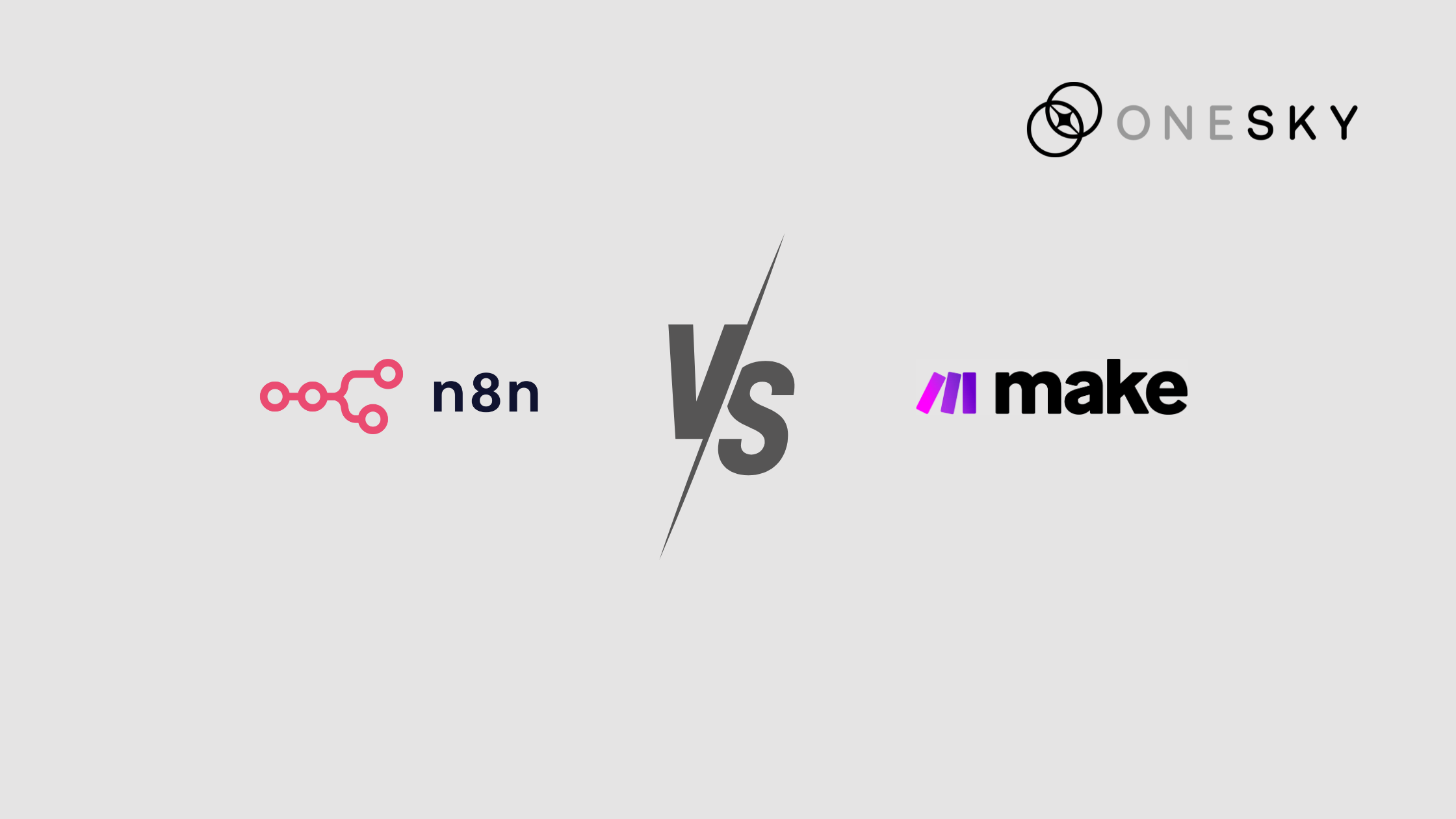
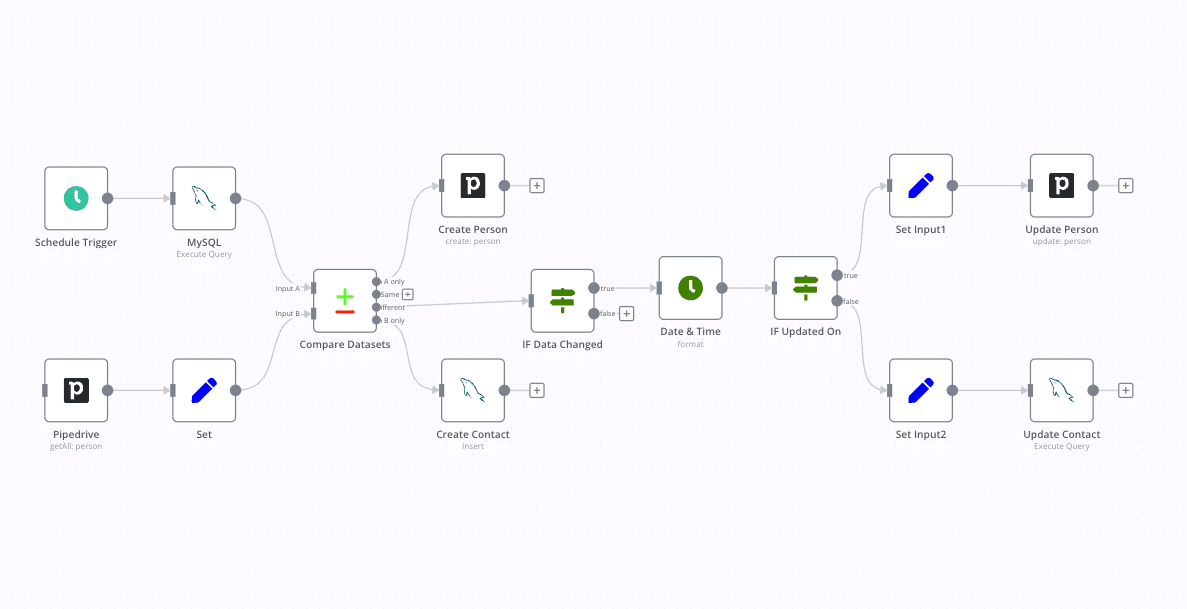
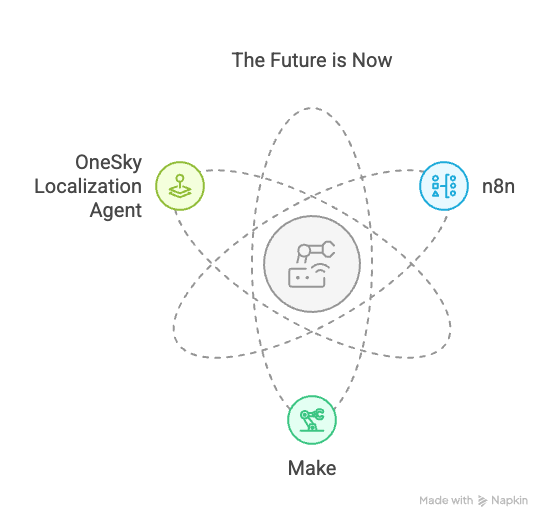
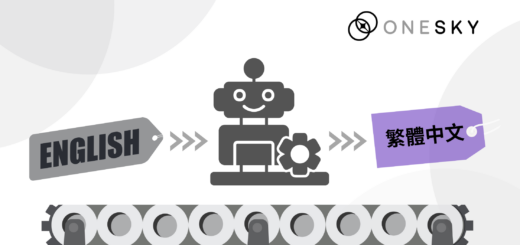
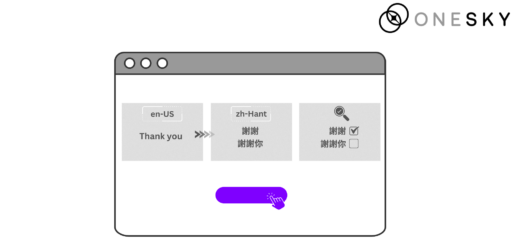
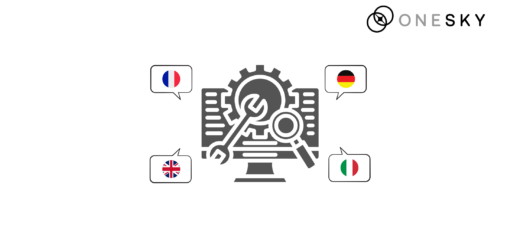
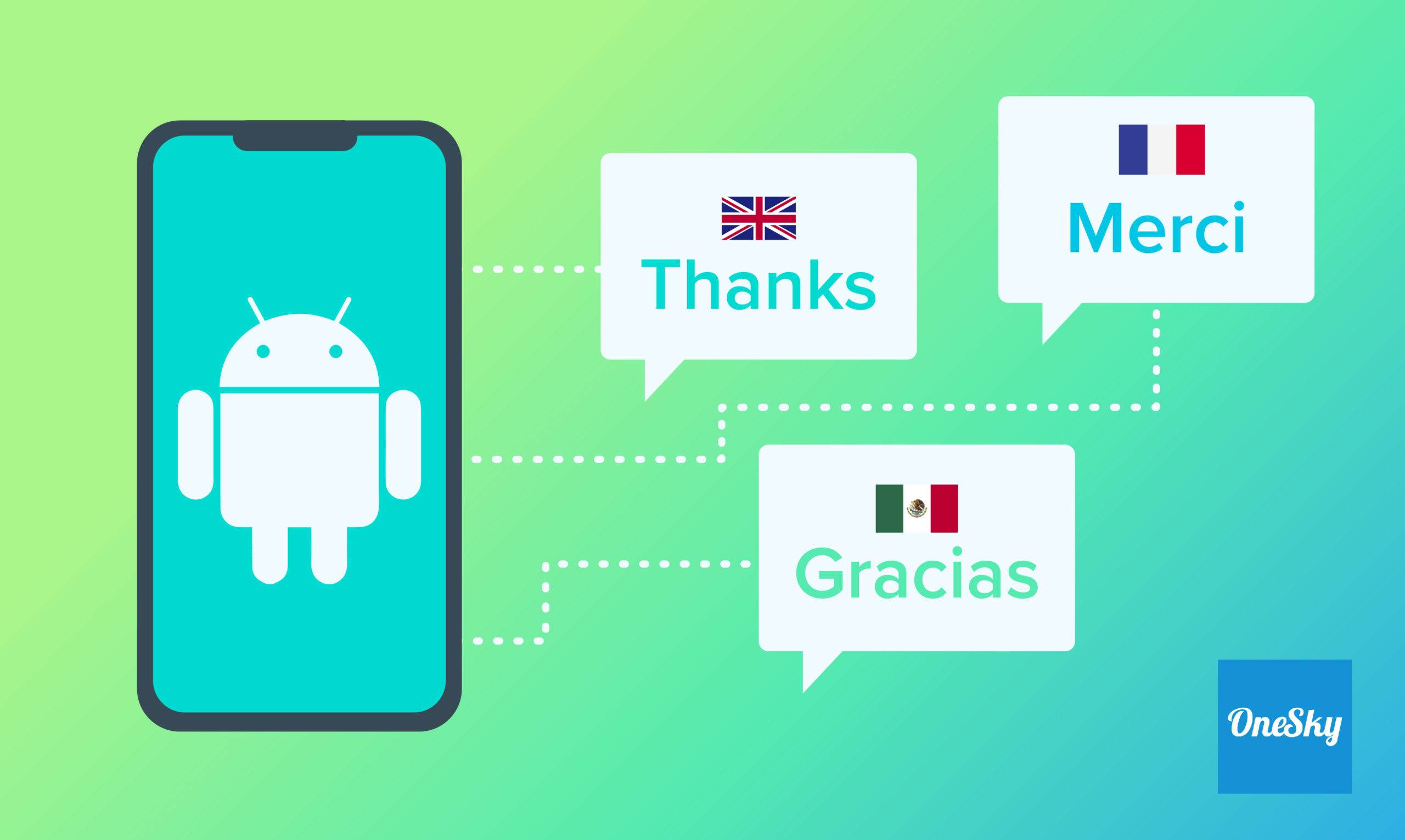
 Written by
Written by 

 Written by
Written by 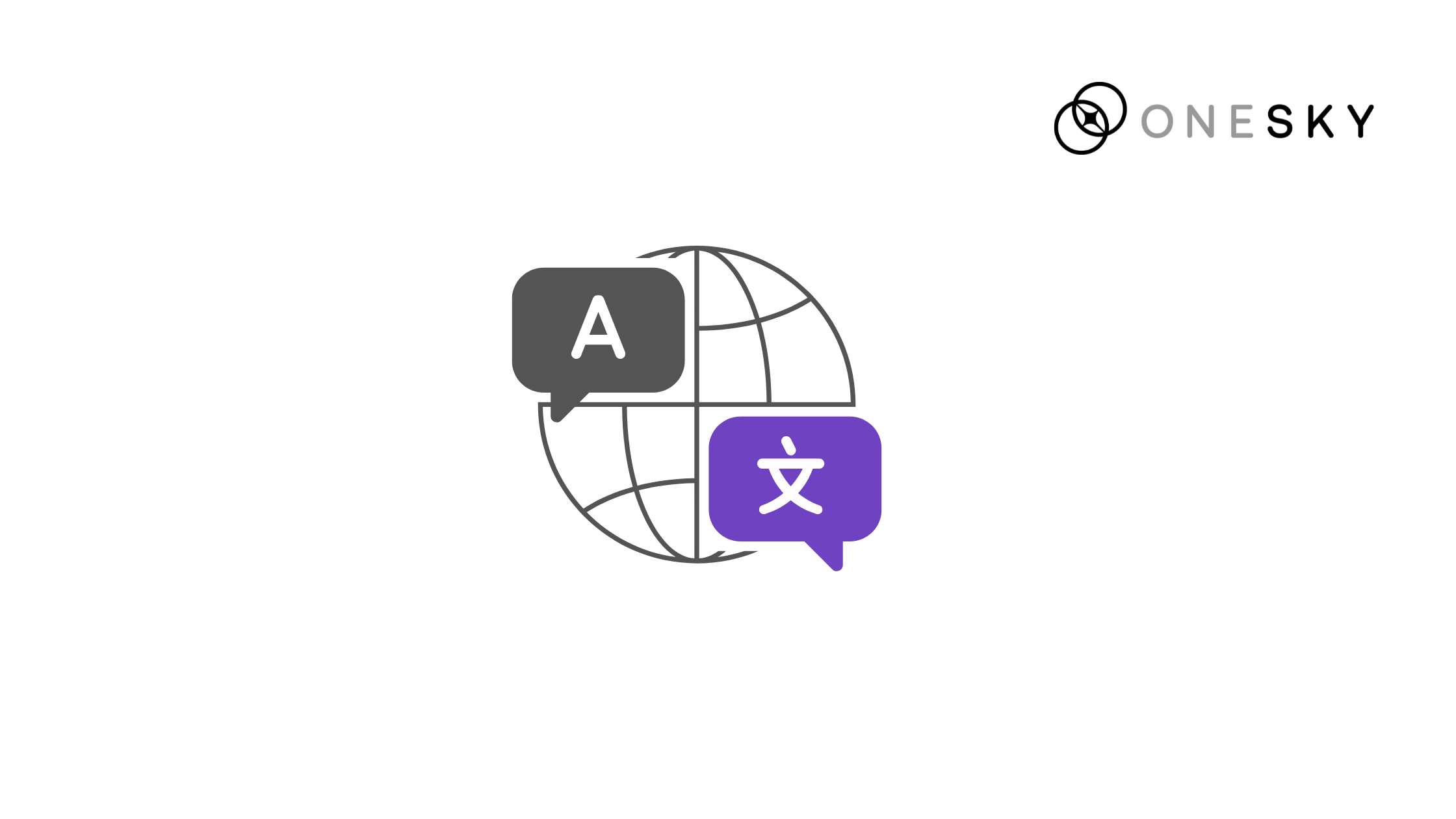
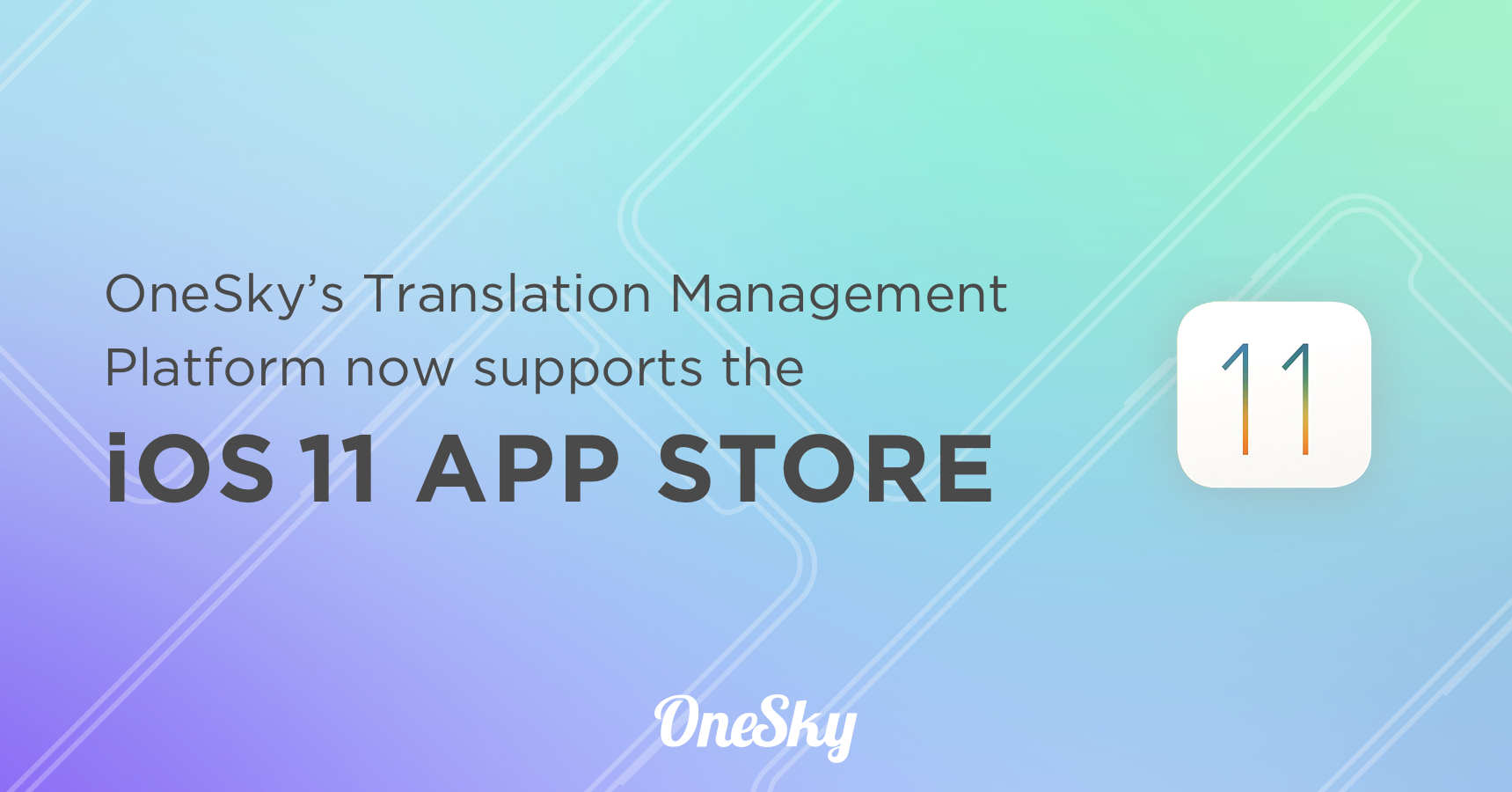
 Written by
Written by 
